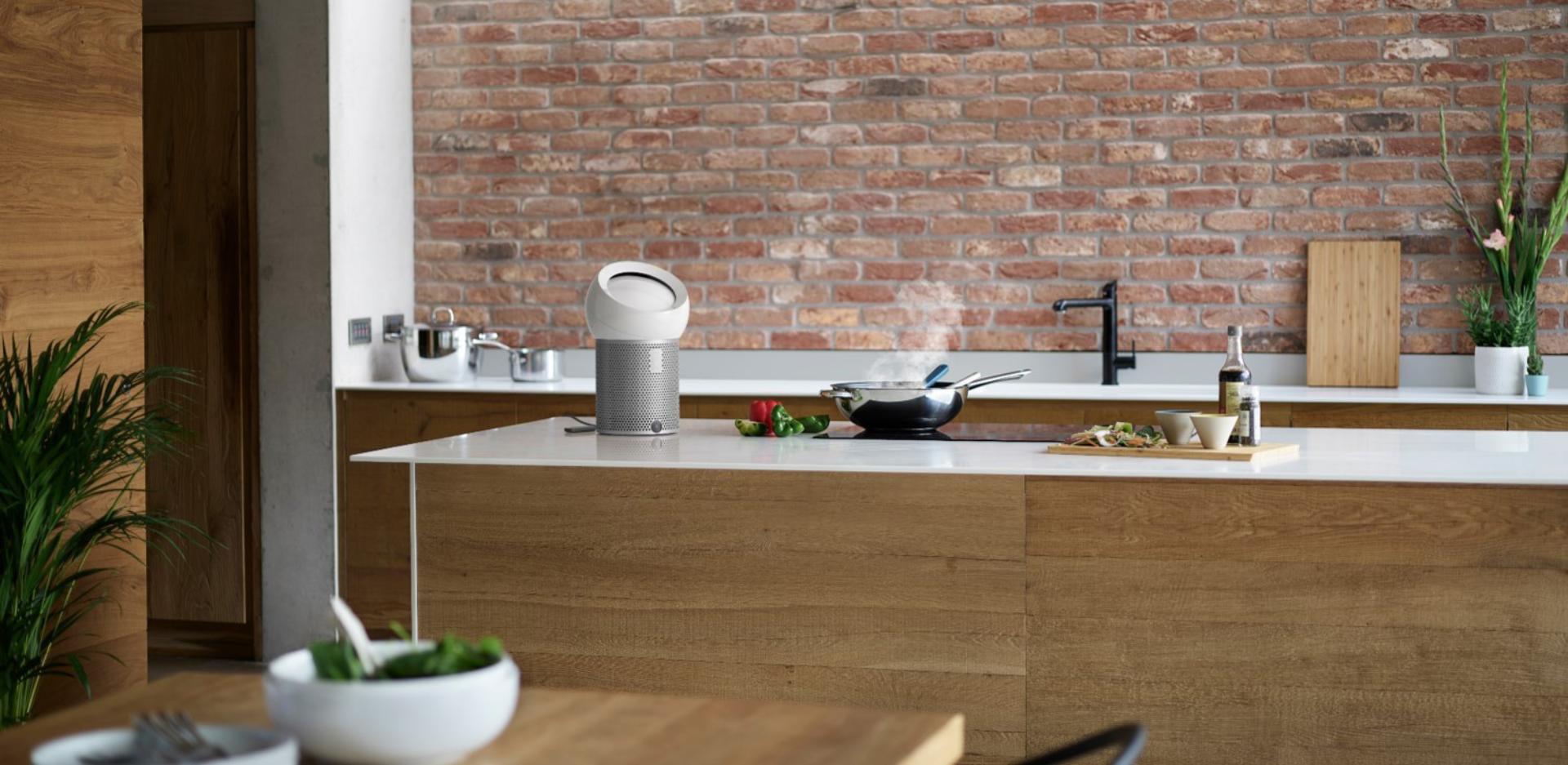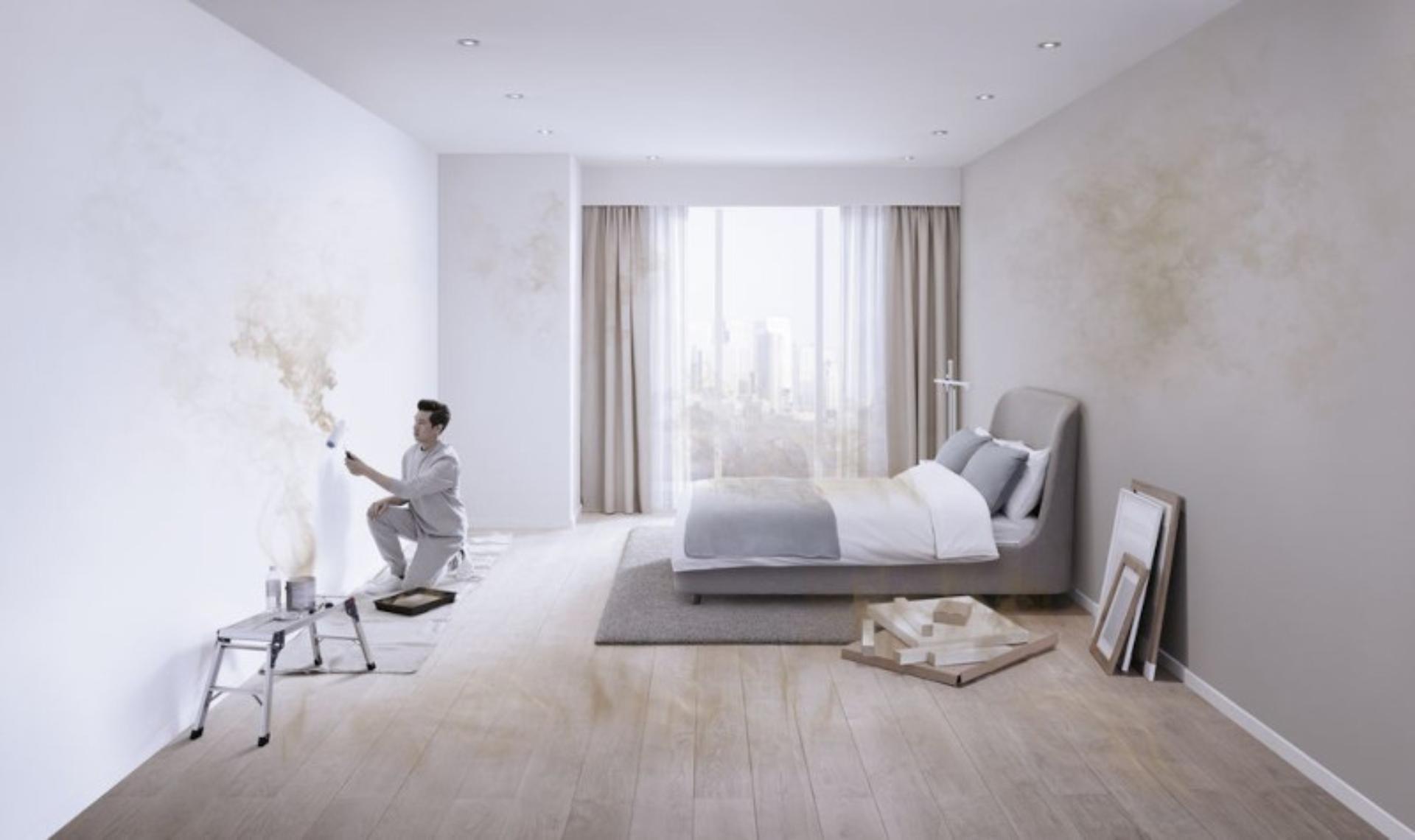
How to maintain a healthy home
With many of us spending more time at home, there is increasing awareness that the quality of our indoor environment can affect our health and wellbeing. Experts reveal the problems associated with indoor pollutants such as dust and formaldehyde as well as some simple steps to help remove them.
11 February 2021
We spend as much as 90% of our time indoors1 and the air we breathe contains microscopic particles which are invisible to the human eye. The cleanliness of your house has a direct correlation to your indoor air quality and wellbeing. Less dust and allergens in your home means there is less in the air you breathe.
At Dyson, we have over 25 years of experience and expertise in HEPA filtration and filter media and have our own in-house microbiology lab, armed with the sort of equipment usually associated with hospital laboratories. Dyson’s microbiology facilities were built almost 18 years ago and as far as we know we’re the only floorcare manufacturer to have in-house microbiology labs in the world.
We really wanted to understand what was in household dust but couldn’t find the expertise anywhere so decided to build our own lab. Our microbiology and household dust lab allow us to investigate the components of real dust and debris found in real homes. By understanding this, we can better enable our technologies to deal with the conditions they face in real homes. As a company, we’re committed to getting every Australian to understand the importance of a healthy home.
What’s really lurking beneath surfaces?
Dennis Mathews, Research Scientist in Microbiology at Dyson, says, “When we bring pets, plants, people, food and furnishings into our homes, they all carry their own sources of pollution, bacteria and mould contamination. Effectively, we transport the outside, inside with us as we go about our daily lives, bringing microbes and allergens on our shoes, clothes and any other domestic items.”
Household dust is made up of a complex range of microscopic particles, including pollen, bacteria, skin flakes and dust mites. Dust mites feed on human and animal skin flakes, so areas where we spend a lot of time, like our beds, can harbour a lot of skin deposit and dust mites.
Crucially, the proteins found in dust mite faeces are what can cause allergies – and dust mites can produce around 20 pellets a day.2 So while you may not be able to see the dust in your mattress, sofa, carpets or curtains, it’s important that you vacuum them regularly to reduce the amount of dust and associated allergens in your home.
Some of the volatile organic compounds (VOCs) found in our homes can come from chemicals in cleaning products we use on kitchen surfaces, bathrooms and windows. Limonene is one of the compounds that makes cleaning products smell like citrus, but it can react with naturally occurring ozone in the home to create formaldehyde. Using natural cleaning products can help lower the amount of VOCs in your indoor air.
Some of the things we might enjoy at home like scented candles can also be sources of indoor air pollution. Rather than avoiding them completely, try lighting candles only in moderation – for example in the evening – ensuring that you ventilate the room, or use a purifier afterwards to help remove any remaining VOCs or particulate matter from the air.
Dennis says, “Once in the home, temperature and humidity influence what can survive and be prevalent within an indoor environment. There’s no practical way to reduce how much microbial matter we bring inside, so cleaning and vacuuming carpets and floors is essential to maintain low levels of bacteria and moulds to reduce the bioburden in our homes and maintain our wellbeing.”
What is formaldehyde?
Professor of Global Environmental Health, Sotiris Vardoulakis, at the Australian National University (ANU) Research School of Population Health, is a leading expert in air quality and indoor pollution. Professor Vardoulakis says, “There are a range of chemical pollutants that we are exposed to in our homes. One of these pollutants is formaldehyde, a colourless and highly flammable gas that enters the environment from man-made and natural sources including bushfires."3
Professor Vardoulakis says, “Formaldehyde can be present in every home, as it is emitted from building materials (e.g. insulating materials and pressed-wood products), household products (e.g. paints, cleaning products, pesticides, adhesives), parquet flooring and carpets, smoking and unvented fuel-burning appliances. This chemical is released from these products at room temperature however, this process called off-gassing, will reduce over time. Formaldehyde levels are higher in newer houses and in the presence of new furniture.4”
How can pollution in the home impact your health and wellbeing?
Professor Vardoulakis continues, “Exposure to formaldehyde may cause health effects in some individuals. The severity of symptoms depends on the concentration and duration of exposure. Certain population groups, including children and people with respiratory conditions such as asthma, are at higher risk of developing symptoms. Formaldehyde is carcinogenic to humans, based on an increased risk of nasopharyngeal and leukaemia cancers. It can also cause irritation of the eyes, nose and throat. People with skin conditions such as eczema can also be irritated by exposure to relatively low concentrations of formaldehyde.”
Professor Vardoulakis says, “We’re often exposed to many different types of both indoor and outdoor air pollution and the health effects of different pollutants can depend on the individual. Certain groups may be particularly sensitive to the effects of air pollutants, including young children, pregnant women, the elderly and one in nine Australians who suffer from respiratory health conditions such as asthma, hay fever or bronchitis.”
How can you remove indoor pollution?
Dennis Mathews, Research Scientist in Microbiology at Dyson, says, “To reduce the amount of germs in the home and on items such as the couch and curtains, I recommend vacuuming these regularly as they can harbour not only large debris but also dust mites, skin flakes and other allergens such as pollen and food allergens. Wash any sofa coverings and cushions to reduce the level of dust caught within them, as this will help to break down allergens (proteins) and reduce the amount to cause allergies. A lot of dust can gather in curtains and blinds. Make sure to vacuum them regularly or launder them if possible and practical.”
“Keep your carpets, hard floors, upholstery and surfaces free of dust and pet hair – most effectively by vacuuming ‘little and often’. Vacuuming frequently on areas that receive more footfall will help to stop dirt building up and getting trodden into your floor. Using a cord-free vacuum is helpful for this, as the versatile format means you don’t have to spend time getting the machine out of the cupboard, plugging it in, moving it around and so on.”
Professor Vardoulakis adds, “Air purifiers with HEPA filters, when appropriately used, can reduce exposure to smoke particles and significantly improve indoor air quality. Air purifiers with sealed HEPA filters can provide added protection from smoke as well as keeping the air clean of everyday pollutants found in our homes. This includes indoor pollutants such as dander from pets, fumes from gas stoves and VOCs from beauty products like hair spray.”
“The best way to reduce exposure to formaldehyde in the home is to avoid products that contain this product as well as avoid smoking indoors,” continues Professor Vardoulakis.
“When buying new furniture, removing the packaging and allowing these to air out before bringing them into the home can also allow products to off-gas. Ventilation can help to lower the temperature and humidity in the home, while air purifiers with HEPA filters can capture and destroy formaldehyde.”
[1] Klepeis NE, Nelson WC, Ott WR, et al. The National Human Activity Pattern Survey (NHAPS): a resource for assessing exposure to environmental pollutants. J Expo Anal Environ Epidemiol 2001;11:231-52
[2] Portnoy, Jay et al. (2013), “Environmental assessment and exposure control of dust mites: a practice parameter.” Annals of allergy, asthma & immunology: official publication of the American College of Allergy, Asthma, & Immunology vol. 111,6: 465-507. doi:10.1016/j.anai.2013.09.018
[3] SA Health (11 Sept 2020), ‘Formaldehyde’, Available here https://www.sahealth.sa.gov.au/wps/wcm/connect/public+content/sa+health+internet/conditions/chemicals+and+contaminants/formaldehyde.
[4] Vardoulakis S., Giagloglou E., Steinle S., Davis A., Sleeuwenhoek A., Galea K.S., Dixon K., Crawford J.O., 2020. Indoor Exposure to Selected Chemical Air Pollutants: A Systematic Review. International Journal of Environmental Research and Public Health 17, 8972; doi:10.3390/ijerph17238972
ANZ Press Office
Email: aupressoffice@dyson.com
